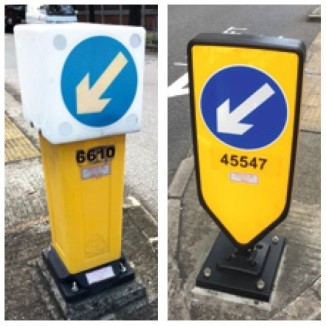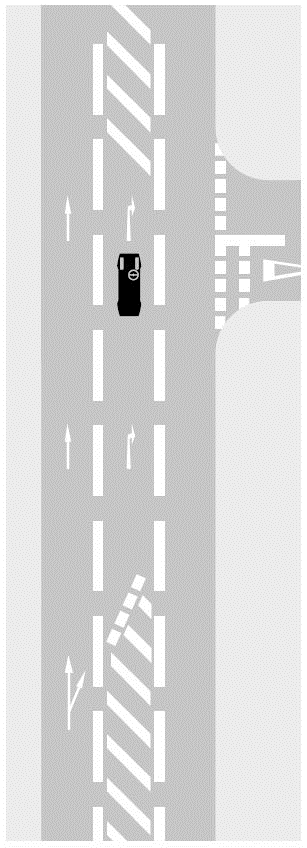Along the road
 Traffic lane line |
 Centre line |
 Warning line |
| The longer the marking, the greater the hazard. |
||
Two-way roads
 |
If there is a traffic island with a ʻKeep leftʼ sign in the middle of the road, pass to the left of the island. You must not drive to the right. A single broken line in the middle of the road, with short markings and long gaps, is a centre line. You should normally drive to the left of this line except when overtaking. A single broken line on the road with long markings and short gaps, is a warning line. This is to give warning of a hazard ahead. Do not cross it unless you can see the road ahead is clear. Drive with particular care. |
